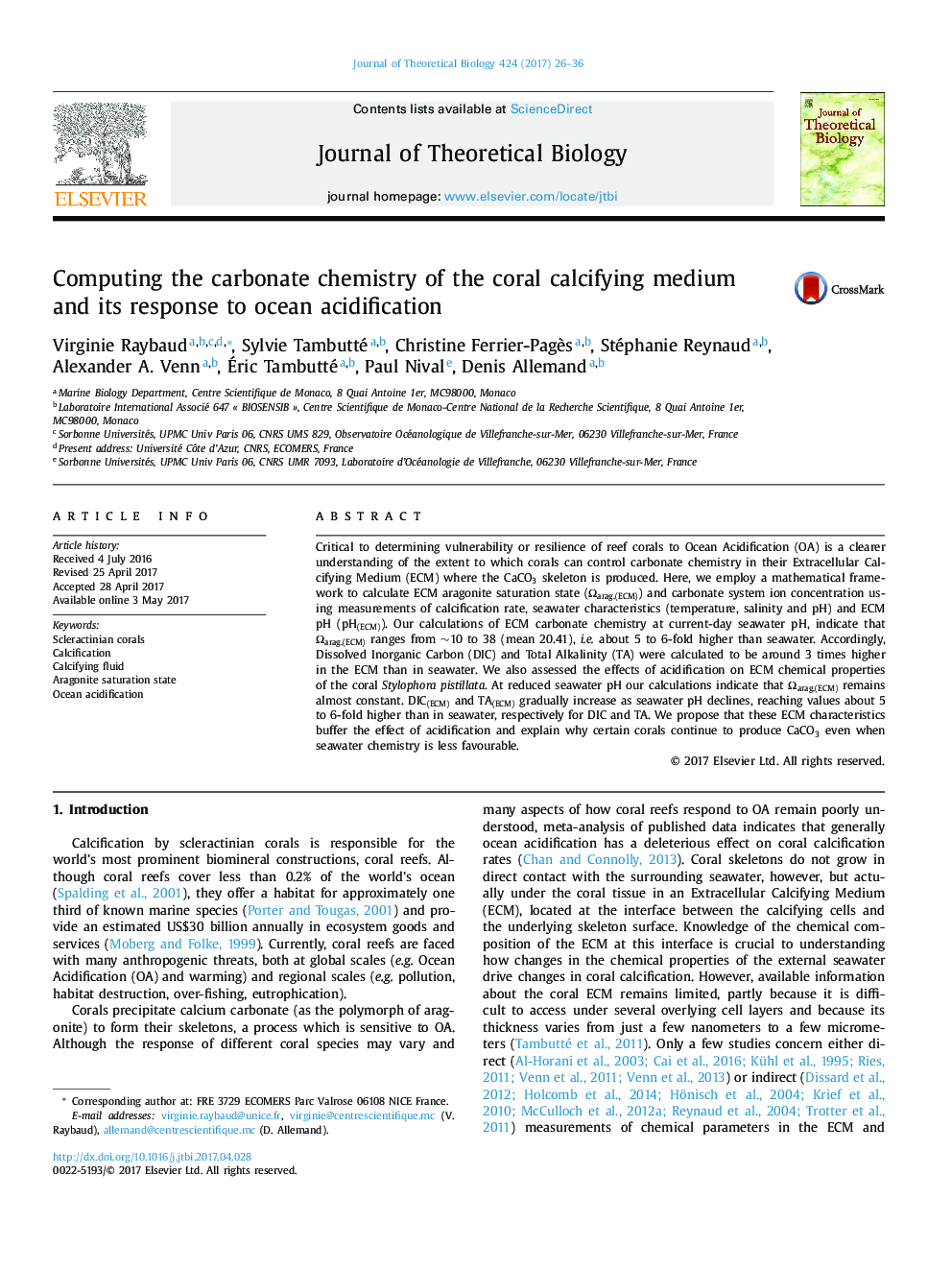| Article ID | Journal | Published Year | Pages | File Type |
|---|---|---|---|---|
| 5760284 | Journal of Theoretical Biology | 2017 | 11 Pages |
Abstract
Critical to determining vulnerability or resilience of reef corals to Ocean Acidification (OA) is a clearer understanding of the extent to which corals can control carbonate chemistry in their Extracellular Calcifying Medium (ECM) where the CaCO3 skeleton is produced. Here, we employ a mathematical framework to calculate ECM aragonite saturation state (Ωarag.(ECM)) and carbonate system ion concentration using measurements of calcification rate, seawater characteristics (temperature, salinity and pH) and ECM pH (pH(ECM)). Our calculations of ECM carbonate chemistry at current-day seawater pH, indicate that Ωarag.(ECM) ranges from â¼10 to 38 (mean 20.41), i.e. about 5 to 6-fold higher than seawater. Accordingly, Dissolved Inorganic Carbon (DIC) and Total Alkalinity (TA) were calculated to be around 3 times higher in the ECM than in seawater. We also assessed the effects of acidification on ECM chemical properties of the coral Stylophora pistillata. At reduced seawater pH our calculations indicate that Ωarag.(ECM) remains almost constant. DIC(ECM) and TA(ECM) gradually increase as seawater pH declines, reaching values about 5 to 6-fold higher than in seawater, respectively for DIC and TA. We propose that these ECM characteristics buffer the effect of acidification and explain why certain corals continue to produce CaCO3 even when seawater chemistry is less favourable.
Related Topics
Life Sciences
Agricultural and Biological Sciences
Agricultural and Biological Sciences (General)
Authors
Virginie Raybaud, Sylvie Tambutté, Christine Ferrier-Pagès, Stéphanie Reynaud, Alexander A. Venn, Ãric Tambutté, Paul Nival, Denis Allemand,
